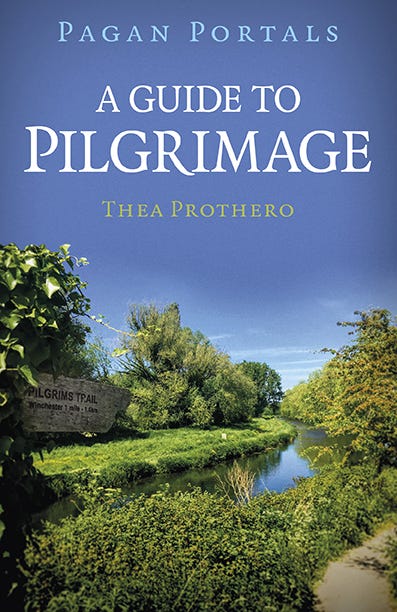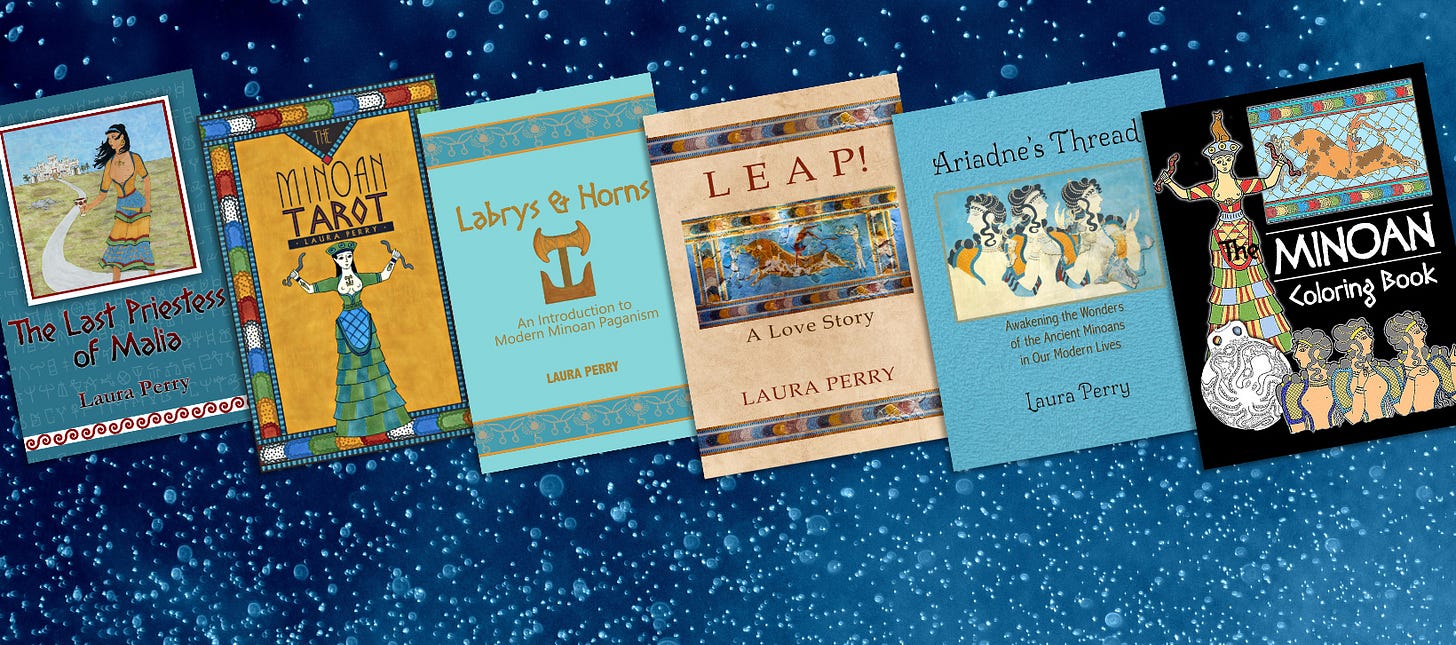A Book Review and a Panel Discussion
One about pilgrimage, the other about the spirits of the dead
First, the book review…
This was a lovely read. So many of us have felt compelled at various times to make a meaningful journey to a particular place. Pilgrimage feels like an almost universal human impulse to me, and Thea Prothero explores the concept deeply here, from multiple different perspectives.
Pilgrimage is something people have been doing for quite a long time, and the author explores the history of the practice as well as sharing her own experiences over the years. She points out that pilgrimage has long been an activity that crosses class divides; both the wealthy and ordinary folks have been drawn to make pilgrimages.
Pilgrimage in the modern world takes many different forms; pilgrimages to Graceland are every bit as meaningful as those to traditional religious destinations. As long as it’s meaningful to the person doing it, that’s all that matters. The author makes an interesting point, that many of us have probably made pilgrimages without realizing it, without framing it in that specific language. So now I’m looking back over my past travels (I have made pilgrimages that I overtly defined as such) and wondering how much of it could reasonably be framed as pilgrimage.
The author describes popular pilgrimage sites in different physical regions and sites that are meaningful in different religions (or lack of religion). I think there’s a natural human instinct for ritual, and pilgrimage - whether overtly religious or not - helps satisfy that need.
The information in the book is interspersed with commentary from a wide variety of people of different spiritual paths, talking about their personal experiences with pilgrimage, as well as the author’s own pilgrimages. I loved reading so many different variations on the theme, so many different ways of viewing and experiencing the practice.
I’ve known about labyrinths in churches for a long time — no surprise, what with all the Minoan stuff I do. But I didn’t realize, until I read this book, that they were used as a “pilgrimage substitute” for people who didn’t have the time or money to make an actual journey. You would walk the labyrinth as your pilgrimage, which makes total sense to me. The author has included a lovely labyrinth guided meditation, which I found quite meaningful.
Throughout the book, there’s a repeated theme, that pilgrimage isn’t so much about doing something as it is about undoing — releasing ordinary life and ordinary ways of thinking, opening up space for something new. I really like that idea. The modern world is so full of activities that are additive, that draw increasingly tight borders around us. The idea of making a pilgrimage to release all of that and start fresh is quite appealing.
I also enjoyed the exploration of the liminal aspect of pilgrimage, the idea of crossing thresholds at multiple points during the pilgrimage process. This underscores the idea that we’re moving in more than just the physical world when we undertake a pilgrimage; it’s a reminder that there are more aspects to life than just the material, and our actions have repercussions on all those different layers.
From a practical perspective, the book can easily be used to plan and undertake a real pilgrimage. The author provides plenty of advice for dealing with the real-world aspects of pilgrimage in the modern world as well as activities for focusing those feelings of longing into a meaningful journey, bearing in mind the reader’s available time and funds.
Whether you’re interested in the idea of pilgrimage from a symbolic perspective, or in making an actual pilgrimage yourself one day, this is an excellent and informative resource. In fact, once I was finished with the book, it occurred to me that reading it may have been a sort of mental pilgrimage, and a very pleasant one at that.
…and the panel discussion:
I recently had an interesting, seasonally appropriate conversation on the Witty Witch Podcast, all about connecting with the ancestors and the spirits of the dead. Catherine Le Fay (the Witty Witch) was the host, and I was one of the panel discussion members along with Diana Rajchel, Lisa McSherry, and Ben Stimpson.
We all come from very different backgrounds and have differing spiritual and magickal practices and traditions. But I was amazed at how much we also have in common, especially regarding involving the ancestors and the spirits of the dead in our spiritual practices.
We talked about what this time of year signifies to each of us, how the spirits of the dead figure in our personal spiritual lives, and some interesting aspects — and a few pitfalls — that we’ve encountered along the way.
You can have a listen here:
I wish you all the blessings of the season, and healing and wholeness to your ancestors and Beloved Dead!
My Substack is free, but if you’d like to support my work (please and thank you!), you can find my books here and my art here and here.
About Laura Perry
I'm an author, artist, and creator who works magic with words, paint, ink, music, textiles, and herbs. I'm also the founder and Temple Mom of Ariadne's Tribe, a worldwide inclusive Minoan spiritual tradition. My spiritual practice includes spirit work and herbalism through the lens of lifelong animism. I write Pagan / polytheist non-fiction and fiction across several different subjects and genres. I'm currently working on an illustrated book of modern Minoan myths and a Minoan entry in the Moon Books Pantheons series (release date 26 August 2025). I’m also an avid gardener and living history demonstrator.







"As long as it's important to the person doing it...". Nice and Accurate 💚